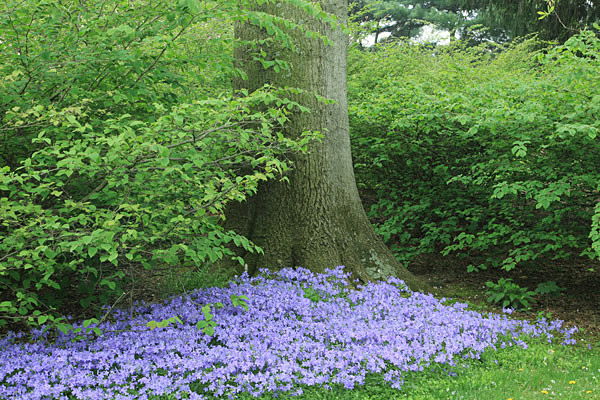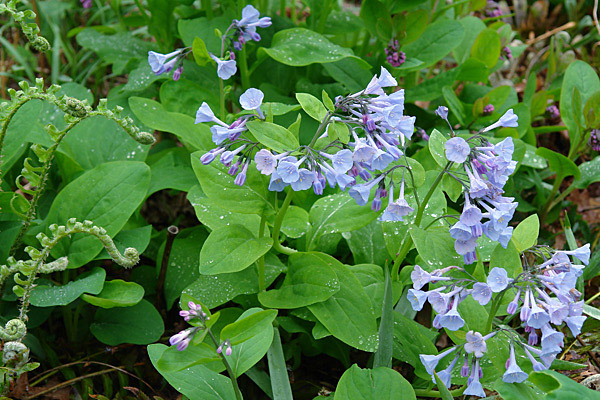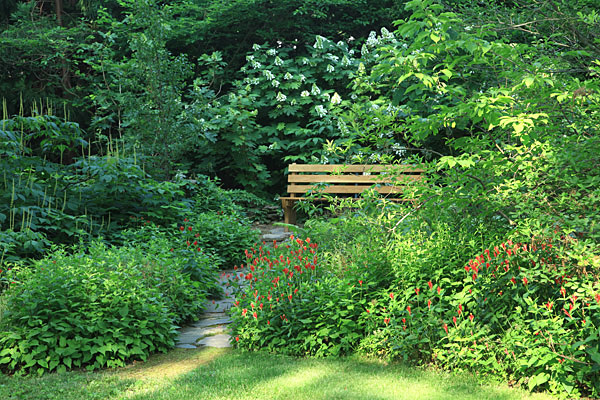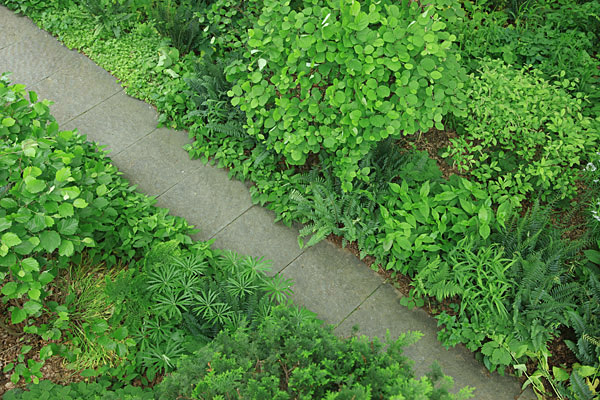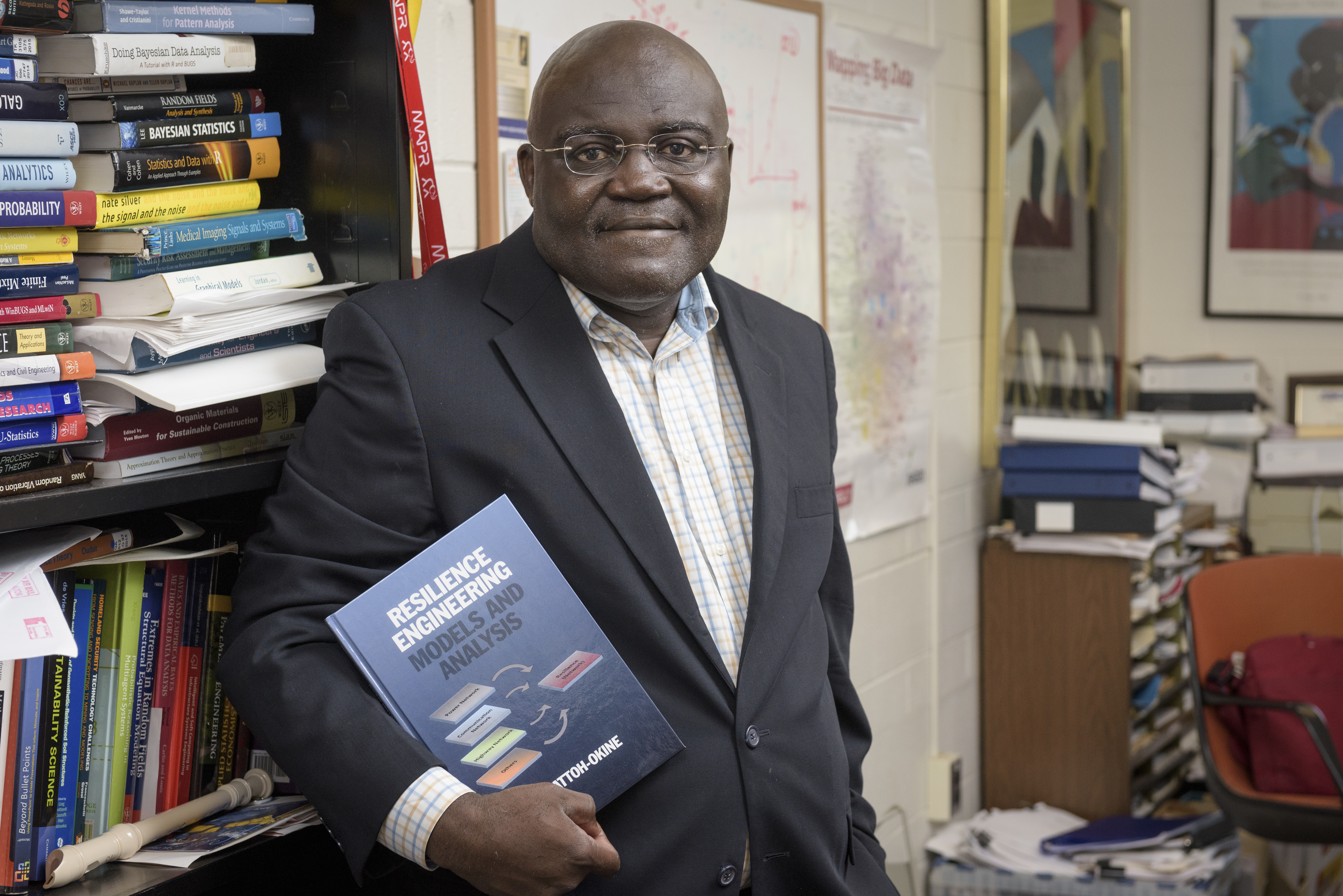The modern garden
Landscape consultant to discuss 'Design for the Nature of Today's Garden'
8:50 a.m., March 27, 2012--The nature of gardening today is much different than it was a generation ago. More households have two working parents who have less time and inclination to prune regularly and pull every errant weed. Money is tighter, too, not only for most households but for most municipalities.
Homeowners can’t spend a lot on chemical fertilizers and herbicides or new trees and shrubs. Likewise, local and state governments can’t devote much money or time to maintaining parks and natural areas.
People Stories
'Resilience Engineering'
Reviresco June run
Rick Darke doesn’t see anything bleak in this picture; rather he chooses to focus on the opportunities that exist in contemporary gardening.
“There has never been a more interesting or exciting time to be involved in the design of outdoor spaces,” says Darke, a University of Delaware alumnus who heads a Pennsylvania-based landscape consulting firm. His books include The American Woodland Garden and The Wild Garden: Expanded Edition.
“There has been a sea change in how we approach our green spaces,” adds Darke. “This new trend embraces the dynamic nature of living landscapes and identifies conservation, functionality and viability as primary goals.”
Darke will talk about “Design for the Nature of Today’s Garden” on Tuesday, April 10, at UD’s Townsend Hall. Sponsored by the UD Botanic Gardens, the lecture is a kick-off event for the gardens’ spring plant sale, which is open to the public April 27-28.
Darke, who with his wife, Melinda Zoehrer, gardens on 1.5 acres in Landenberg, Pa., points to his own yard to illustrate how his approach to landscape design and stewardship has evolved over the years.
For example, he has become better at choosing the “right plant for the right place.” A dozen or so years ago, he planted native sweet bay magnolias in his back yard, which adjoins the White Clay Creek Preserve. Deer from the preserve quickly discovered these magnolias and rubbed the fragrant bark to the point that the trees wouldn’t have survived another season. Darke transplanted the magnolias to the front yard, which the deer tend to avoid. Although he solved his problem, he wasted valuable time.
“Melinda and I are busy with work, travel and socializing,” says Darke. “We don’t have endless time to devote to the garden.”
These days, he carefully considers site selection. A smart choice, in his opinion, was a stand of tall, warm-season grasses that he placed on the edge of the property. The grasses serve as a privacy screen while also providing habitat for wildlife.
To save both time and money, Darke lets the wind, water, birds and animals dictate -- through seed dispersal -- what new plants get added to his yard. He still buys plants but more often he enjoys these seedlings that arrive spontaneously.
“We have a group of nearly 30-foot-tall beeches that originated as seedlings 13 or 14 years ago,” notes Darke. “People don’t realize how fast a seedling can grow. In six years, a beech seedling can become a 12-foot-tall tree.”
Of course, you might not be thrilled with where the wind dropped your new beech tree -- perhaps it’s growing between flagstone pavers or in front of your prized red-twig dogwood. That’s where judicious editing comes in, notes Darke. Feel free to transplant seedlings to different locations in your yard and to give away excess seedlings.
In the Darke and Zoehrer yard, the long list of “free plants” acquired by seed dispersal or self-seeding and sporing include viburnum, beech, sassafras, oaks, silver bells, spicebush, asters, ferns and dogwood.
The economic benefits of utilizing existing vegetation are even greater on large tracts of land. Currently, Darke is consulting on a project that will convert a Pittsburgh brownfield and abandoned steel mill, Carrie Furnace, into a mixed-use residential and commercial development.
“This 400-acre property has thousands of self-sown native sycamores and cottonwood,” notes Darke. “Any one of these 20- to 50-foot trees would cost more than $1,000 to buy. The most environmental approach is to allow these trees and other existing plants to form the backbone of the site’s new landscape.”
UD Botanic Gardens lecture
Darke’s lecture will be held at 7 p.m. on Tuesday, April 10. The cost is $15 for the public, $10 for members of the UD Botanic Gardens. For more info go to the UD Botanic Gardens website or call 831-0153.
Article by Margo McDonough
Photos by Rick Darke






